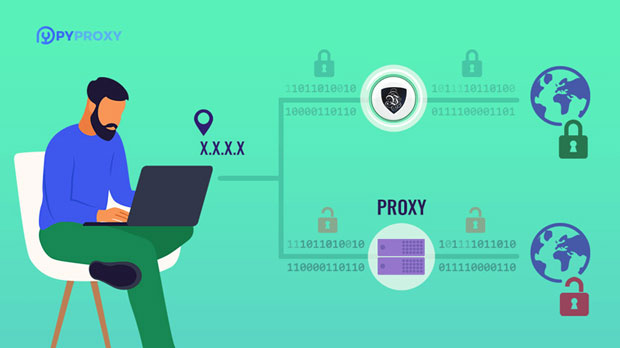In wireless proxy environments, maintaining stable and reliable connections is a key factor in ensuring optimal service performance. Among various proxy tools available, PYPROXY and Proxy Croxy are popular choices for both personal and business use. However, one of the challenges that users often face when using these proxies is the issue of disconnection. This article analyzes the disconnection rates of PyProxy and Proxy Croxy in wireless proxy environments, aiming to provide a clearer understanding of their reliability and help users make informed decisions. The analysis includes a deep dive into factors affecting disconnection rates, comparison between the two proxies, and potential solutions to mitigate downtime. Understanding Disconnection Rates in Wireless Proxy EnvironmentsThe disconnection rate in a wireless proxy environment refers to the frequency with which a proxy connection drops or becomes unstable. This issue is crucial for users who depend on proxy services for continuous, secure, and anonymous browsing. Factors influencing disconnection rates include network latency, signal interference, and the protocol being used, which can vary significantly between different proxies.Wireless networks, by their nature, are more prone to instability due to signal fluctuations, interference from nearby devices, and bandwidth limitations. Proxies, acting as intermediaries between users and the internet, are directly affected by these factors. Analyzing the disconnection rates of proxies like PyProxy and Proxy Croxy provides valuable insight into their overall performance and reliability in real-world wireless environments.Factors Affecting Disconnection RatesNetwork Congestion and LatencyNetwork congestion and high latency are among the most significant contributors to disconnection rates in wireless proxy environments. In scenarios where multiple users share the same wireless network, the available bandwidth is divided, leading to slower speeds and potential packet loss. High latency, which is the delay in transmitting data between the proxy and the end user, can cause timeouts and disconnections, especially in wireless networks where signal strength is already a limiting factor.PyProxy and Proxy Croxy, although both reliable, react differently to high latency. PyProxy, which is built on lightweight protocols, tends to handle moderate latency better, but may struggle when signal degradation is severe. Proxy Croxy, on the other hand, has a more robust error-handling mechanism, but its performance may degrade with extreme network congestion.Protocol and Encryption OverheadThe type of protocol and encryption used by a proxy server also plays a critical role in its disconnection rate. More complex protocols with stronger encryption tend to introduce higher overhead, leading to more frequent disconnections in unstable wireless environments. PyProxy, for example, uses a simpler protocol that minimizes overhead, but this can come at the expense of security and privacy. Proxy Croxy, with its advanced encryption and tunneling techniques, may experience more disconnections in wireless networks due to the additional computational load.When comparing the two, users must balance the need for security against the potential for connectivity issues. For environments where security is the highest priority, Proxy Croxy may be preferable, while PyProxy is a better choice in situations where speed and efficiency are more critical.Comparing PyProxy and Proxy Croxy in Wireless EnvironmentsPyProxy: Lightweight, Efficient, but VulnerablePyProxy is designed to be lightweight and easy to use, making it an attractive choice for those seeking minimal configuration and quick setup. It is particularly useful in wireless environments with moderate to low network congestion, as it consumes less bandwidth and minimizes the chances of disconnections.However, PyProxy's simple protocol and lack of robust error handling mechanisms make it more vulnerable to instability in high-latency or highly congested wireless networks. In scenarios where signal strength is inconsistent or network interference is common, users may experience frequent drops or timeouts.Proxy Croxy: Robust but Resource-IntensiveProxy Croxy, on the other hand, is known for its advanced features and superior security measures. It uses more sophisticated protocols, including SSL and HTTPS tunneling, which enhance privacy and encryption. While these features provide stronger security, they come at the cost of increased resource consumption, leading to higher disconnection rates in unstable wireless environments.Despite this, Proxy Croxy offers better error recovery mechanisms, which allow it to maintain a connection longer than PyProxy in cases of network instability. It is well-suited for users who require high security, but it is not ideal for situations where low latency and minimal disconnections are paramount.Minimizing Disconnection Rates in Wireless Proxy EnvironmentsOptimizing Wireless Network ConditionsOne of the most effective ways to reduce disconnection rates is by optimizing the wireless network itself. This includes using high-quality routers that offer strong signal coverage, minimizing interference from other electronic devices, and ensuring that the network is not overcrowded. Wireless networks that support 5 GHz frequencies, for example, tend to offer more stable connections than those relying on the crowded 2.4 GHz band.Choosing the Right Proxy for the TaskUnderstanding the specific needs of a given environment is crucial when choosing between PyProxy and Proxy Croxy. For users who prioritize fast, low-latency connections, PyProxy may be the better option. Conversely, for users who require strong encryption and error handling, Proxy Croxy is the more reliable choice, especially in networks with fluctuating signal strength.Network Monitoring and TroubleshootingIn cases where disconnections are frequent, network monitoring tools can be used to identify issues like congestion, latency spikes, and packet loss. These tools can help users pinpoint the cause of disconnections and take appropriate measures, such as switching to a less congested wireless channel or upgrading hardware.In conclusion, the disconnection rate in wireless proxy environments is influenced by a variety of factors, including network congestion, latency, protocol overhead, and wireless network stability. PyProxy and Proxy Croxy offer distinct advantages and drawbacks, making them suitable for different use cases. By understanding the specific needs of their environment and optimizing network conditions, users can minimize disconnections and improve the overall performance of their proxy services. Both PyProxy and Proxy Croxy have their place in wireless proxy environments, and the choice between them should be guided by the specific requirements of security, performance, and network stability.
Sep 16, 2025






















































